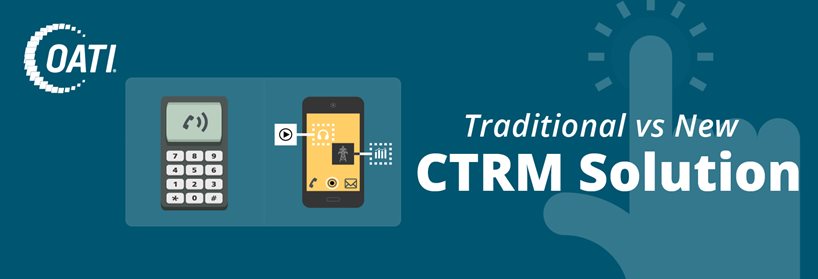Home » Blog » Trading & Risk Management » Traditional vs New: Commodity Trading & Risk Management Solutions
Traditional vs New: Commodity Trading & Risk Management Solutions
How many people still use a flip phone? After all, flip phones are still fully capable of making phone calls. Is it more desirable to have a flip phone, laptop, GPS system, and phone book? Or does it make more sense to switch to an all-in-one smartphone?
How about your vehicle? Do you still drive the car you had when you were a teenager? It’s probably still running, but it doesn’t have the safety features, ergonomic comfort features, energy efficiency, and latest technology of new models. In addition, it probably requires significantly more maintenance than a new car, and more maintenance means more time and money.
The thoughts that went through your head as you read these questions are what should also go through your mind when you think about your Commodity Trading & Risk Management (CTRM) system. Many companies use systems that are decades old and while they do work, similar to a flip phone and an older vehicle, those CTRM systems may require multiple work-around systems in order to provide additional functionality and benefits.
Hidden Costs in Legacy Systems
If you take a close look at the real cost of your existing CTRM system, you may find there are hidden costs that make it significantly more expensive than at first glance. Like the old car that doesn’t have car payments but requires more oil, new brakes, and new tires, older CTRM systems require more maintenance which carries a very real cost. For example, an older CTRM system likely requires additional IT resources to maintain work-arounds and outdated interfaces. There may also be manual processes that require additional staff and may carry additional risk due to manual intervention.
In addition, developers are often extremely leery of making changes to old systems that have bandages and a patchwork of systems that might break if the primary software is updated. To address this, labor-intensive actions or new work-arounds may be required, further increasing the maintenance costs of the software and processes.
Key Benefits of New Solutions
There are a plethora of advantages to new CTRM platforms, but what key benefits do they offer that executives should give careful consideration of in preparation for the next 10 years of business?
Built on new technology, these new platforms facilitate the ability to:
- Offer real-time updates of key information such as risk exposure, available credit, position, and profit and loss
- View reports quickly without sacrificing response time
- Integrate with mobile apps
- Enhance and extend functionality
- Ease the challenge of integrating with other systems
- Provide greater flexibility
- Eliminate the need for interfacing software when business operations don’t meet the rigid rules of legacy CTRM systems
- Support quicker updates to accommodate market changes such as 5-minute prices instead of hourly, shale gas and the increased volatility of gas prices, and retirement of generation combined with the increase in renewables
- Host the solution as a Software-as-a-Service (SaaS)
- Reduce IT, hardware, and maintenance costs (check out our blog What is the Value of Using Software-as-a-Service? for more information)
Disruption + Business + Technology = New Solutions
Today’s world is all about disruption and the creation of new businesses that weren’t in operation until recent years; some notable businesses and products include Uber, Lyft, Amazon, Tesla, drones, self-driving vehicles, Facebook, Snapchat, Twitter, Blockchain, and Bitcoin. The business world and the technologies a business uses changes and adapts quickly, and it only makes sense that a CTRM solution should do the same.
Companies can achieve many benefits by replacing outdated software with new software. There are costs to upgrading to new systems — such as training, testing, and evaluating the existing business processes — but the net benefits of new solutions compared to the use of antiquated, outdated systems is clearly evident.
Interested in learning more? Visit OATI’s Commodity Trading & Risk Management solutions webpage here or contact Sales@oati.net for more information.
- September 18, 2018
